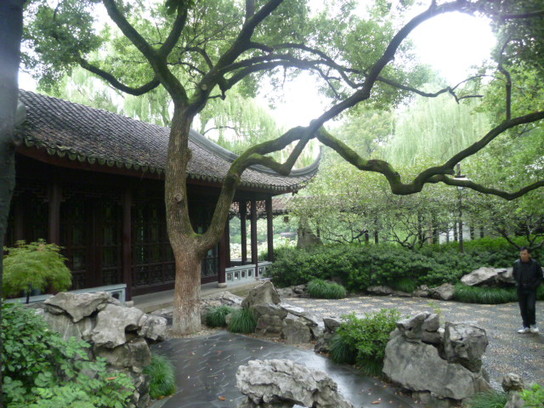 The beautiful Shuyuan Park in Hangzhou
The beautiful Shuyuan Park in Hangzhou Travel, however, melts away prejudices. My recent three-week stay in China certainly altered my elitist views associating beautiful city infrastructure and urban greening with the so-called rich world.
China is on many peoples' minds. I believe it's a generally poorly understood country that, due to its growing economic and political power, tends to give rise to fears in other countries. In this sense, China is a bigger version of the demonized Japan of the 1970s and 80s. While I think fears of China are misplaced - China's rise offers more benefits than disadvantages to the rest of the world - I can see how its rapid move into the future could be unnerving to some. Some of the nasty side effects of its massive industrialization are alarming, particularly the air and water pollution. But on the whole, I would say its advances are positively breathtaking. Based on decades of living and traveling in East Asia, I believe China's future is quite bright and shows clear parallels to the rapid economic rise of countries such as Japan, South Korea and Taiwan, albeit on an enormous scale.
In my recent three-week stay in China, I visited Hangzhou and Shanghai. It would be odd to classify either of these two cities as 'poor' and typical of the developing world. Although China is ranked at the same per capita income level as countries such as Colombia and Thailand, in terms of physical infrastructure Chinese cities have more in common with those in far wealthier countries. As a matter of fact, I believe statistics on China (at least regarding the coastal areas) are misleading. This country is far ahead of where most people think it is.
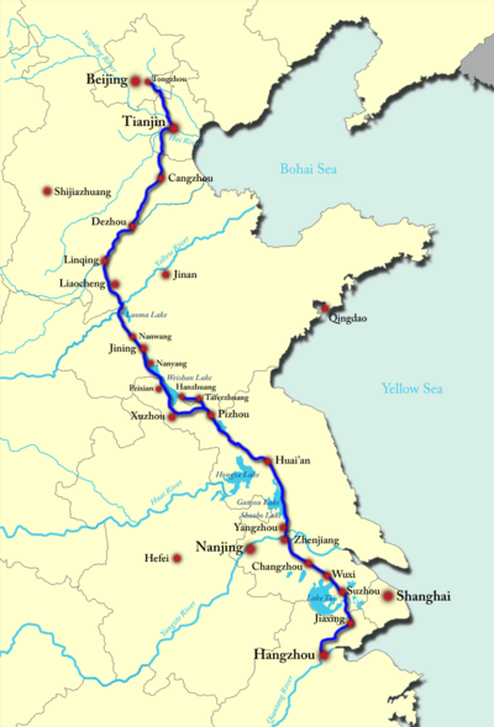 A map of the historic Grand Canal, showing Hangzhou's location in China.
A map of the historic Grand Canal, showing Hangzhou's location in China. Hangzhou is a mid-sized Chinese city of 6 million people but, according to the Chinese government, it has a metropolitan area population of 21 million. Yes, 21 million. Population numbers in China are mind-boggling. Nearby Shanghai (only an hour away) has a metro population of 23 million. Ningbo, Suzhou and Nanjing, also within roughly an hour of Hangzhou, each has a metro area population at or near 10 million. These cities, like Hangzhou, have populations in the range of a Paris or London, but remain virtually unknown to much of the outside world. They deserve (and will get) more attention.
The history of Hangzhou stretches back over 2000 years of Chinese history. Marco Polo claimed to have visited Hangzhou when it was the capital of China, saying that it was 'greater than any city in the world'. It lies at the southern end of the famous "Grand Canal" (see map above), the largest artificial waterway in the world (built in the 6th and 7th centuries A.D.), which wends its way over 1700 kilometers from Hangzhou to Beijing.
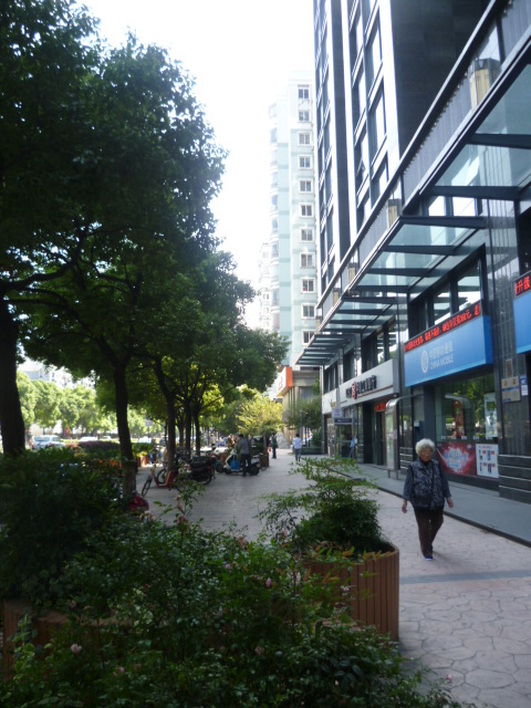 Hushu North Road, near my hotel. Note the finer details and cleanliness.
Hushu North Road, near my hotel. Note the finer details and cleanliness. I quickly came to the conclusion that Hangzhou is, in many respects, a nicer place to live than very rich Hong Kong. There is a sense of open space here and an incredible proliferation of green wherever you look.
Hangzhou has also protected many historical areas and structures, especially around the beautiful West Lake. Further away from the lake, however, it's less likely to find much of anything old. Rapid growth has meant the redevelopment of much of the city. The upwardly mobile Chinese prefer new, modern streets that are as clean as those you would find in Japan. And I must say these streetscapes are well-designed and well-built (see picture above). But the loss of the older neighborhoods is sad in that the streets and alleyways in these areas are especially vibrant. They are abuzz with life and activity, and there seems to be more leeway in these places to stretch out and relax, whether it be people sitting on a curbside or restaurants extending their tables and chairs out onto the pavement. Somehow these older streets are the 'authentic' China to me.
Below you can see a couple of scenes from back streets and alleys, the places I would typically go to find a fresh bowl of steaming noodles or dumplings. Although these are really remnants of the past in Hangzhou, they are alive with energy. And it's interesting to note that like all streets in Hangzhou, they are tree-lined. The Chinese have been at the street-tree planting thing for a long while.
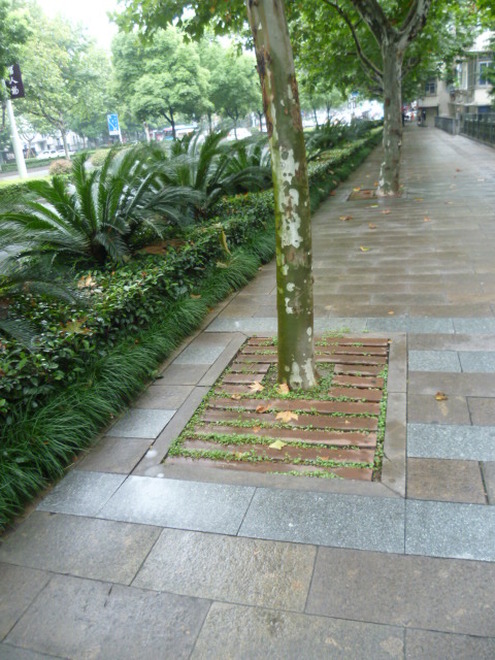 Example of impeccably landscaped street, with trees allocated plenty of room to grow
Example of impeccably landscaped street, with trees allocated plenty of room to grow Tree planting is not done haphazardly. Instead planting areas for trees are large and well-designed. The Chinese seem to be well-versed in the latest research on urban tree planting and landscape architecture. Trees here won't suffer from lack of space as they grow. The landscaping along the edges of streets was also impressive, and brought back memories of super-organized Singapore.
You would be hard pressed to find a large American city that lavishes as much care on its trees and landscaping, and universally uses such a high quality of materials in the construction of its streetscapes.
Below are some pictures of tree-lined streets in Hangzhou.
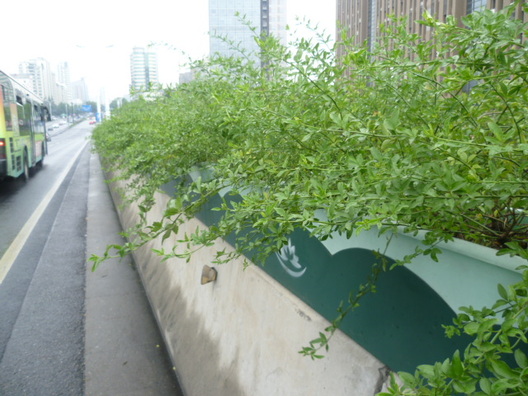 Planters along edge of highway bridge
Planters along edge of highway bridge At the right is an example of planters placed on top of the barrier along the edge of a highway bridge. These planters are filled with flowering bushes, and include an irrigation system.
Another typical eyesore that the Chinese manage to green are multi-level parking garages. I saw planters placed along the edge of all levels of parking garages, where the cascade of plants and bushes camouflages the structure. These parking garages were transformed from urban blight to vertical gardens that can be green centerpieces of their neighborhoods. For years I've wondered why unsightly parking garages have to mar our cities. There is a solution.
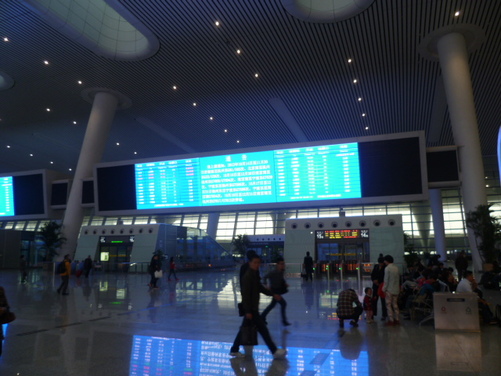 Hangzhou East Train Station, where the new high-speed intercity trains arrive and depart.
Hangzhou East Train Station, where the new high-speed intercity trains arrive and depart. Shanghai already has a very extensive (and still growing) modern subway system. Hangzhou has built its first hyper-modern subway line, and has 6 more lines under construction or planned. You can see an entrance to the metro and a shiny subway station platform in the two pictures below.
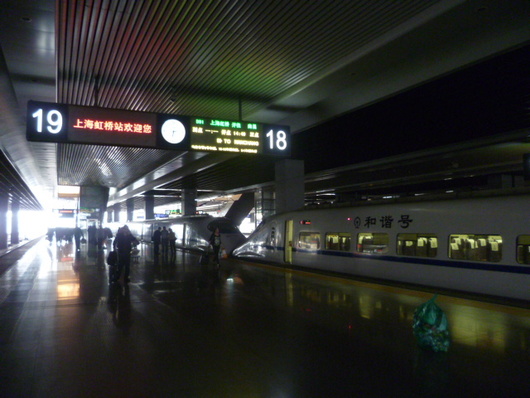 On the platform, about to board the high-speed train to Shanghai
On the platform, about to board the high-speed train to Shanghai 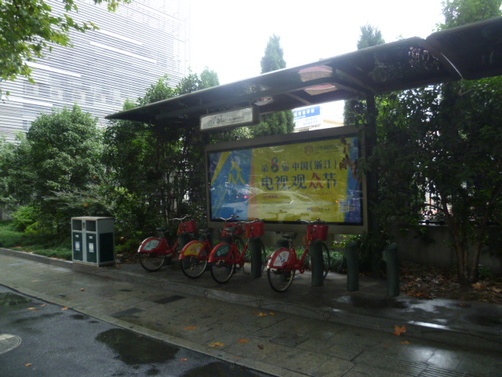 A bike-sharing station in Hangzhou.
A bike-sharing station in Hangzhou. The rapidly growing numbers of automobiles on Chinese roads (more cars are sold in China than in any other country) is exacerbating this air pollution problem. Some cities are trying to limit car ownership through license plate lotteries, and Hangzhou is considering this, as well. But as the city is a center for auto manufacturing, strong limits are unlikely.
A bright spot is the universal system of bike lanes on all major roads in Hangzhou. Biking in this city is a pleasure as you are totally separated from automobile traffic on wide, well-paved bicycle lanes surrounded by lush green landscaping. These lanes are at least double if not triple the width you would find in a city like Amsterdam. There are separate traffic lights for bicycles and even covered shelters at intersections for bicyclists waiting in the rain or strong sun.
Hangzhou also has the world's largest bicycle sharing system, with (as of January of last year) over 66,000 bicycles available at 2,700 stations. The Citi Bike system in New York, by contrast, has about 6,000 bicycles. Hangzhou plans to extend the system to 175,000 bicycles by 2020. You can see a bike-sharing station in the picture above.
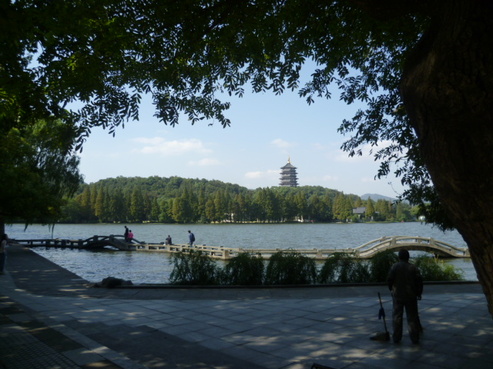 West Lake, with Leifeng Pagoda (with more than 1000 years of history) in the background.
West Lake, with Leifeng Pagoda (with more than 1000 years of history) in the background. The temples, pagodas and gardens around West Lake make up a rare, ethereally enchanting place. For me, the closest parallel to the otherworldly beauty of this area is the fringe of temples along the edges of Kyoto in Japan.
The rather vast area of picturesque landscape and mountains surrounding the lake (more than 8,000 acres) give Hangzhou a green heart and I think may be the inspiration for the well-tended greenery throughout the city.
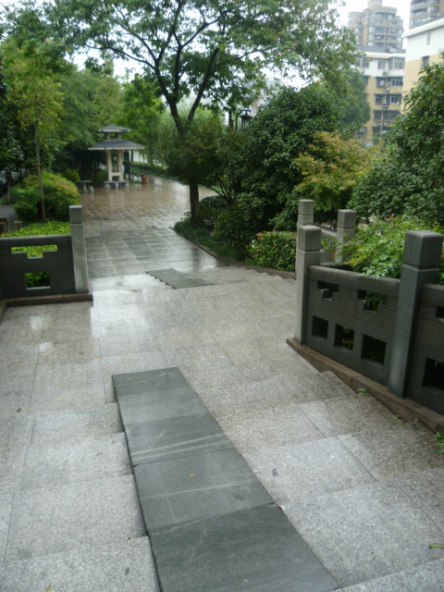 Stairway into a beautiful park along a canal.
Stairway into a beautiful park along a canal. I was amazed at how carefully designed and constructed these parks are. One day I rode my rented bicycle for hours following canal after canal. I filmed a video of my ride along one canal, and you can see this below.
Please note a few things about the video before taking the plunge. It was taken while riding a bicycle and is rather shaky. This can make for a nausea-inducing experience (maybe best not to watch it in full-screen mode). The bicycle I rented had extremely squeaky brakes, and you can hear these throughout the recording. Finally, I was suffering from a nasty sore throat and am clearing my throat often while I speak. In its defense, the video gives you a great picture of a part of Hangzhou that most tourists never see.
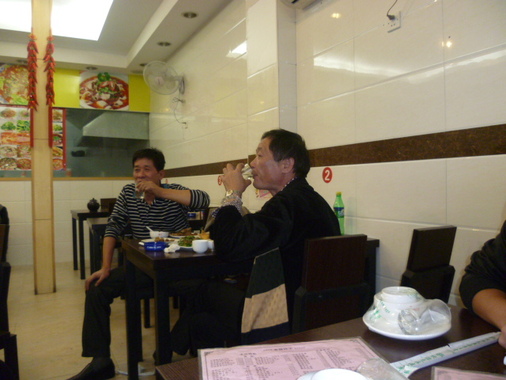
On the left, a local restaurant with scrumptuous food and a convivial atmosphere. The men at the left really wanted to talk, although they could speak very little English. We enjoyed a few beers together. My friend Ting, who guided me through the culinary scene in Hangzhou, is a bit camera shy but joined me for many of my most memorable meals. I want to extend my thanks here to Ting and the many other Chinese people who welcomed me and spoke with me about urban greening in Hangzhou.
Below are pictures of a few simple dishes, all very inexpensive, but very delicious.
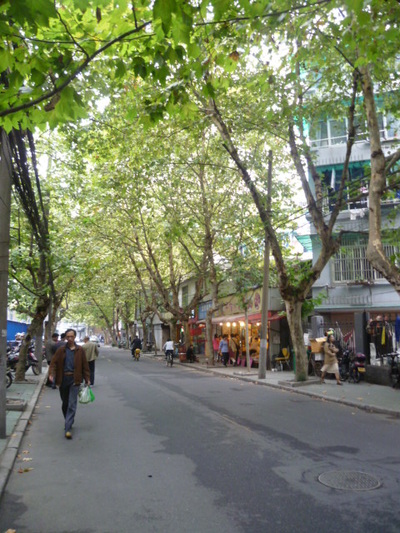
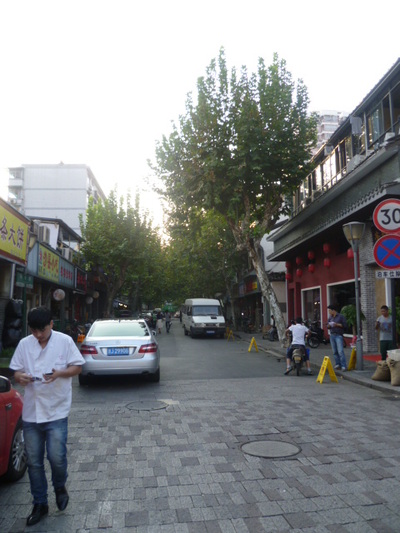
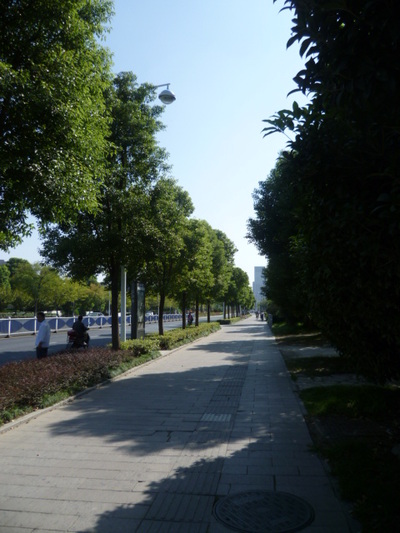
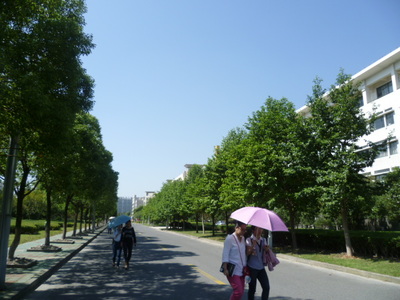

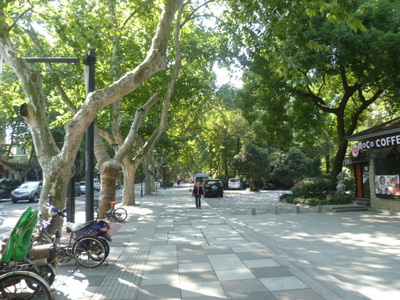
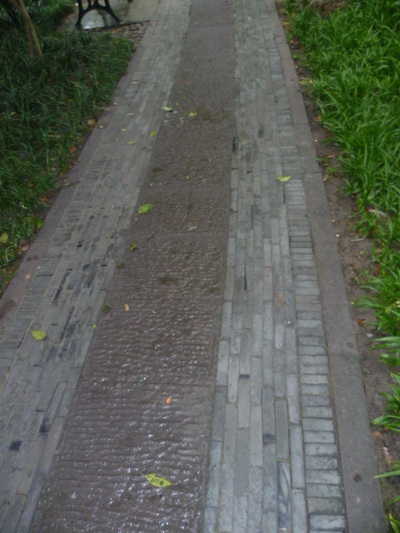
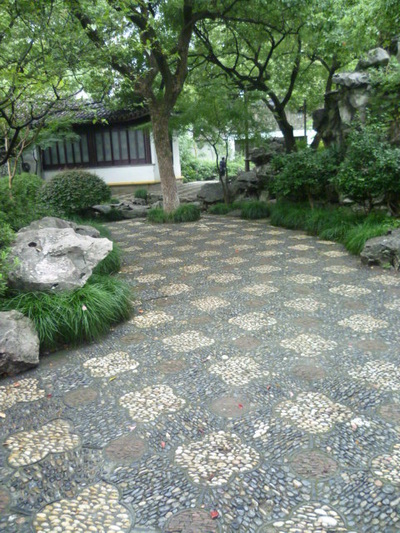
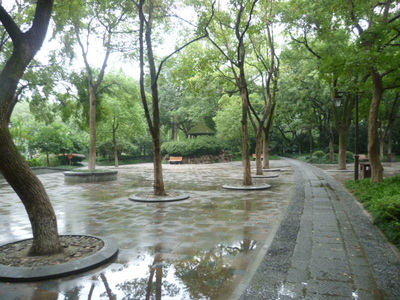
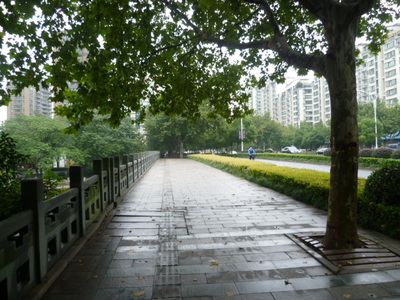
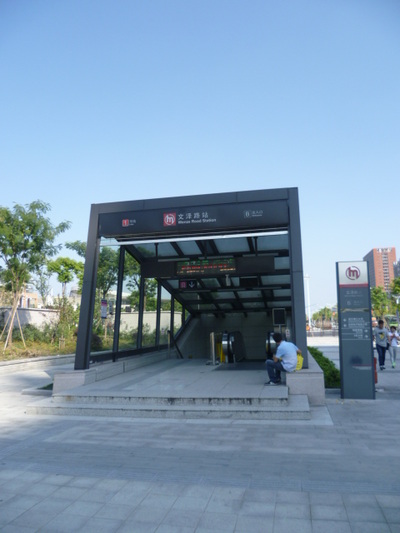
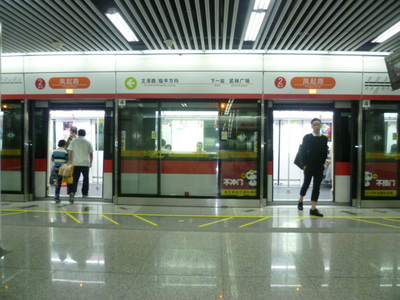
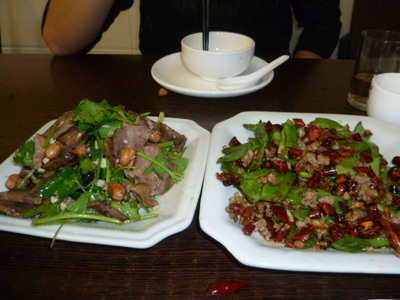
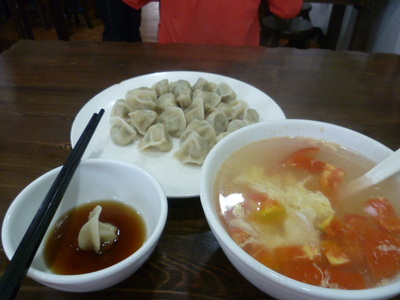
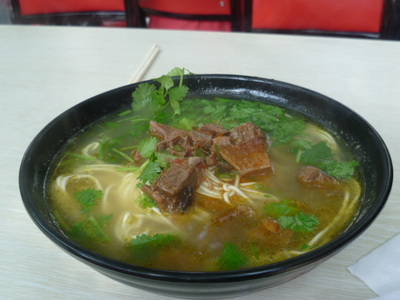
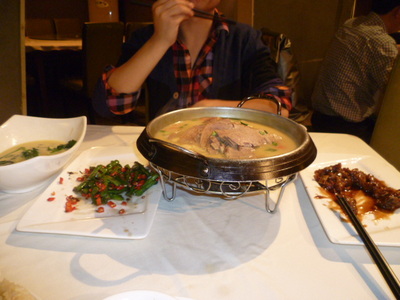

 RSS Feed
RSS Feed

